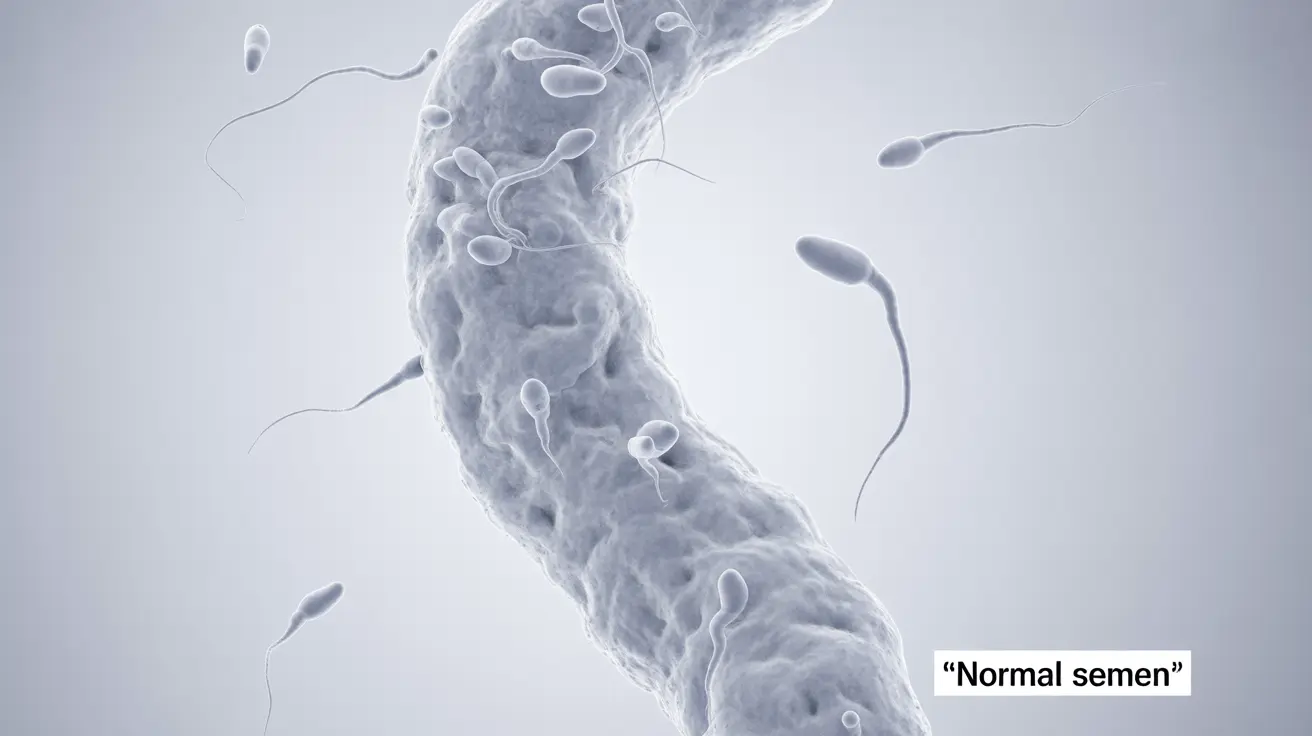For many men, understanding what healthy sperm looks like and knowing when something might be wrong are crucial aspects of reproductive health. Whether you're planning for fertility or simply monitoring your health, being able to recognize normal sperm characteristics can help identify potential issues early.
This comprehensive guide will explore the typical appearance of healthy sperm and semen, what various changes might indicate, and when to seek medical attention. We'll also discuss factors that can affect sperm quality and what different color variations might mean for your health.
Normal Characteristics of Healthy Sperm and Semen
Healthy semen typically appears as a thick, white or grayish-white fluid that becomes more liquid-like within 20 to 30 minutes after ejaculation. This process, known as liquefaction, is entirely normal and necessary for fertility.
The volume of semen produced during ejaculation usually ranges from 1.5 to 5 milliliters. The consistency should be slightly thick and sticky initially, with a neutral to slightly alkaline pH level.
Visual Indicators of Sperm Health
While you cannot see individual sperm cells without a microscope, healthy semen should have these characteristics:
- A uniform, opaque appearance
- White to grayish-white color
- Even consistency throughout
- No unusual odor
- Complete liquefaction within 30 minutes
Common Color Variations and Their Meanings
Changes in semen color can indicate various health conditions or lifestyle factors:
Yellow to Green Tints
Yellowish or greenish semen might indicate:
- Excess white blood cells (possible infection)
- High levels of dietary carotenoids
- Urine contamination
- Jaundice or liver problems
Pink or Red Tints
Pink or reddish semen could suggest:
- Blood vessel damage
- Prostate inflammation
- Recent surgical procedures
- Infection or trauma
Brown or Orange Tints
These colors might indicate:
- Old blood presence
- Medication side effects
- Prostate problems
- High vitamin consumption
Factors Affecting Sperm Quality
Several lifestyle and health factors can impact sperm appearance and quality:
- Temperature exposure
- Smoking and alcohol consumption
- Diet and nutrition
- Medication use
- Environmental toxins
- Stress levels
- Age
When to Seek Medical Attention
Consider consulting a healthcare provider if you notice:
- Persistent color changes lasting more than a few days
- Unusual odor or consistency
- Pain or burning during ejaculation
- Blood in semen
- Fertility concerns
Frequently Asked Questions
What does healthy sperm and semen normally look like in terms of color and consistency?
Healthy semen is typically white to grayish-white in color with a thick, viscous consistency that becomes more liquid within 30 minutes after ejaculation. The appearance should be uniform and slightly opaque.
What does a change in semen color mean, and when should I see a doctor?
Color changes can indicate various conditions, from minor issues like diet changes to more serious concerns like infections or bleeding. Seek medical attention if color changes persist beyond a few days or are accompanied by pain, unusual odor, or other symptoms.
How can I tell if my sperm count, shape, and movement are healthy?
These characteristics can only be accurately assessed through professional semen analysis. A fertility specialist can evaluate sperm count, morphology (shape), and motility (movement) under a microscope.
What factors can affect the appearance and quality of sperm and semen?
Lifestyle factors like diet, exercise, smoking, alcohol use, and exposure to environmental toxins can affect sperm quality. Medical conditions, medications, and age also play significant roles in sperm health.
What are common causes of abnormal semen colors like yellow, green, pink, or brown?
Yellow or green colors often indicate infection or high levels of white blood cells. Pink or red suggests blood presence, while brown might indicate old blood or medication effects. Each color change should be evaluated in context with other symptoms.




